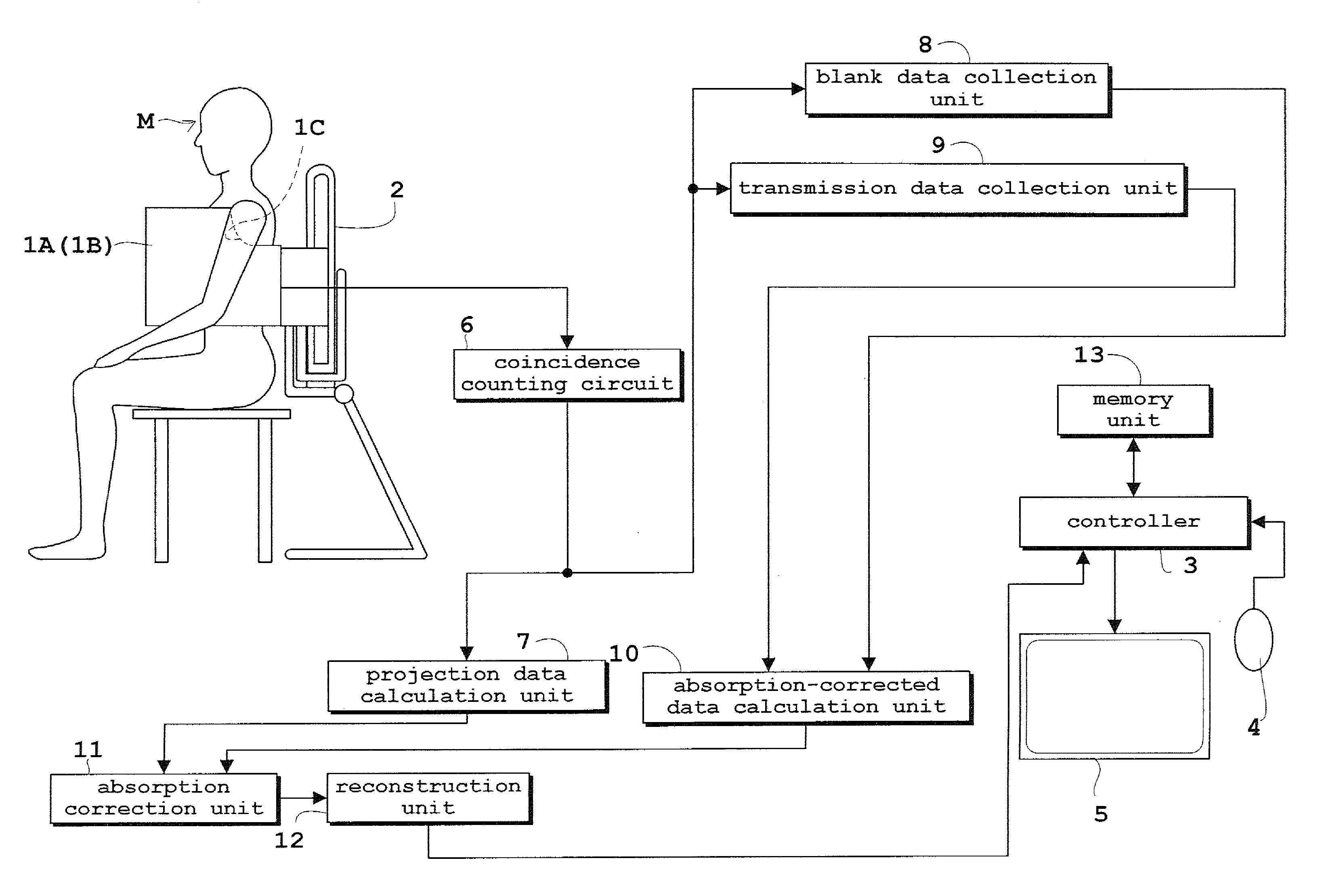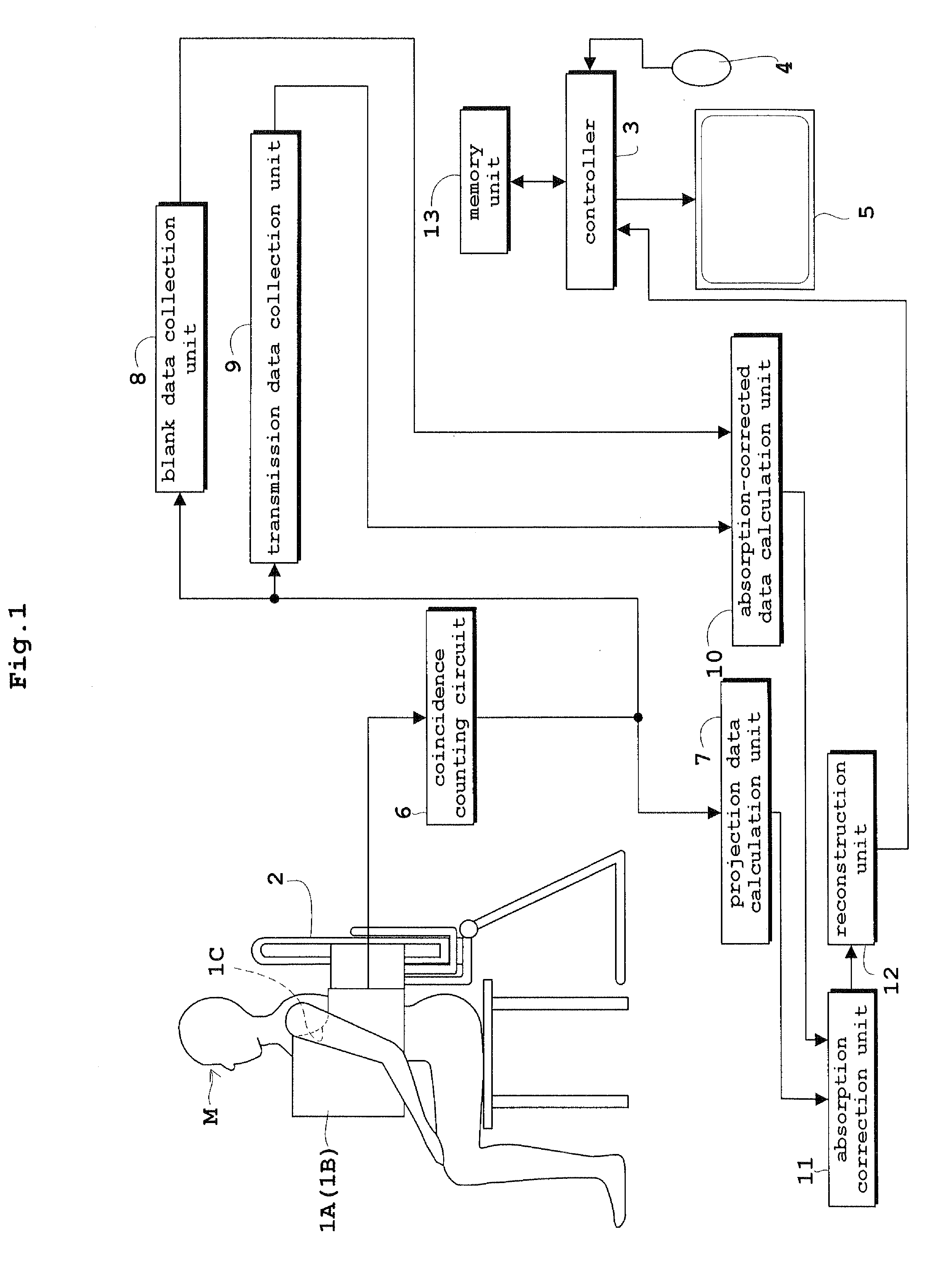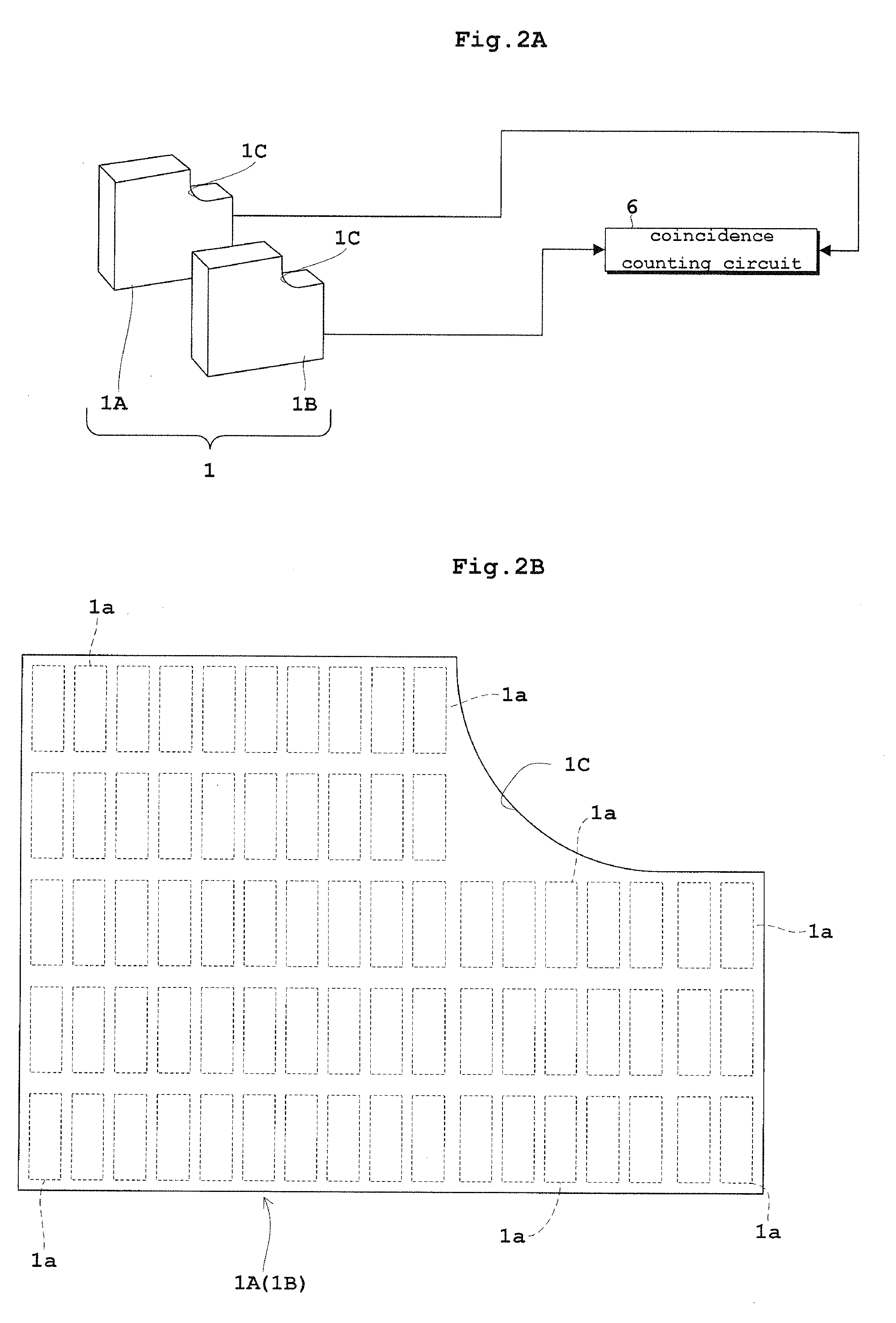Nuclear medicine diagnosis device, form tomography diagnosis device, nuclear medicine data arithmetic processing method, and form tomogram arithmetic processing method
a nuclear medicine and diagnostic device technology, applied in tomography, x/gamma/cosmic radiation measurement, instruments, etc., can solve the problems of deteriorating profile extraction accuracy, inability to secure profiles, and inability to extract profiles, so as to improve the accuracy of profile extraction, improve the accuracy of absorption coefficient maps, and improve the accuracy of absorption correction
- Summary
- Abstract
- Description
- Claims
- Application Information
AI Technical Summary
Benefits of technology
Problems solved by technology
Method used
Image
Examples
first embodiment
[0073]FIG. 1 is a side view and a block diagram of a positron emission tomography (PET) mammography device according to a first embodiment. FIGS. 2A and 2B are a block diagram showing surroundings of detector plates used in the PET mammography device according to the first embodiment and a schematic diagram of each of the detector plates, respectively. FIG. 3 is schematic side view showing a specific configuration of a radiation detector in each detector plate. FIGS. 4A and 4B are schematic diagrams showing modes of scintillators constituting each radiation detector, respectively. In the first embodiment as well as second and third embodiments to be described later, a PET device will be described by way of example as a nuclear medicine diagnosis device. In the first embodiment, the PET mammography device applied to mammograms for breast cancer detection will be described as an example of the PET device.
[0074]As shown in the block diagrams of FIGS. 1 and 2A, the PET mammography devic...
second embodiment
[0117]A second embodiment of the present invention will be described below with reference to the drawings.
[0118]FIG. 7 is a side view and a block diagram of a PET device according to the second embodiment. FIG. 8 is a schematic diagram of a ring radiation detection mechanism employed in the PET device according to the second embodiment. In the second embodiment, similarly to the first embodiment, the PET device will be described as a nuclear medicine diagnosis device by way of example. In the second embodiment, the PET device including ring radiation detection mechanisms 1D downsizing of which is realized by making the mechanisms 1D as proximate to the subject M as possible except for the external radiant source will be described by way of example.
[0119]As shown in FIG. 7, the PET device according to the second embodiment includes a controller 3, an input unit 4, an output unit 5, a coincidence counting circuit 6, a projection data calculation unit 7, a blank data collection unit 8,...
third embodiment
[0150]A third embodiment according to the present invention will be described below with reference to the drawings.
[0151]FIG. 13 is a side view and a block diagram of a PET mammography device according to the third embodiment. FIG. 14 is a side view and a block diagram of a PET device according to the third embodiment. In the third embodiment, similarly to the preceding first and second embodiments, a form tomography diagnosis device will be described while taking the PET mammography device and the PET device as examples. In the third embodiment, an instance in which the present invention is applied to a PET mammography device similar to that according to the first embodiment and an instance in which the present invention is applied to a PET device including ring radiation detectors 1D similar to that according to the second embodiment will be described with reference to FIG. 13 showing the side view and the block diagram of the PET mammography device and to FIG. 14 showing the side...
PUM
 Login to View More
Login to View More Abstract
Description
Claims
Application Information
 Login to View More
Login to View More - R&D
- Intellectual Property
- Life Sciences
- Materials
- Tech Scout
- Unparalleled Data Quality
- Higher Quality Content
- 60% Fewer Hallucinations
Browse by: Latest US Patents, China's latest patents, Technical Efficacy Thesaurus, Application Domain, Technology Topic, Popular Technical Reports.
© 2025 PatSnap. All rights reserved.Legal|Privacy policy|Modern Slavery Act Transparency Statement|Sitemap|About US| Contact US: help@patsnap.com



